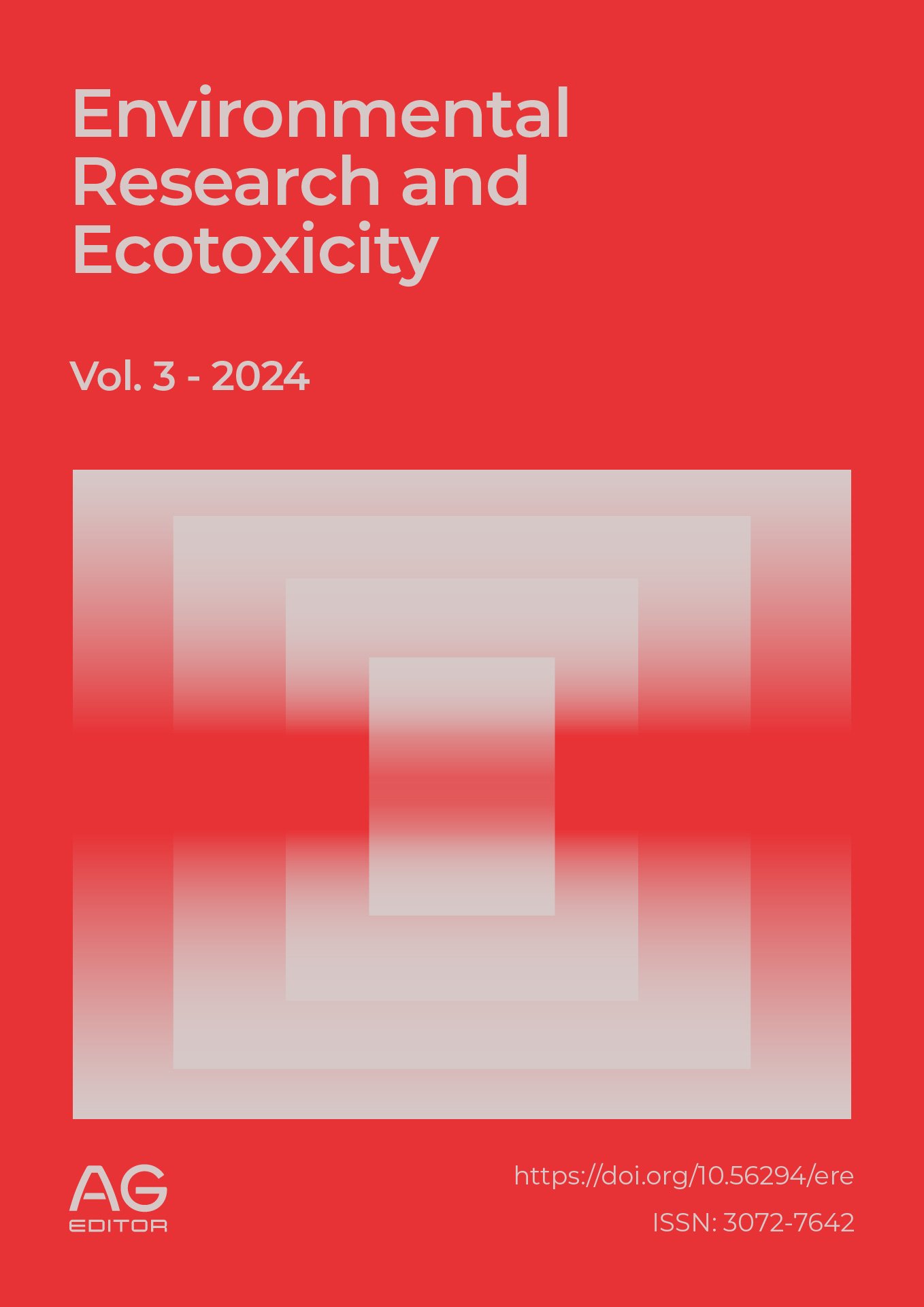Bioclimatic Design in Modern Architecture: Towards a Greener, More Resilient Future
DOI:
https://doi.org/10.56294/ere2024103Keywords:
Bioclimatic design, Modern architecture, Green future, Resilient futureAbstract
The main objective was to explore the theories and practices of bioclimatic architecture, highlighting its potential to mitigate environmental impact and improve quality of life through sustainable building design, and as a consequence, to investigate how bioclimatic architecture and energy efficiency can contribute to sustainable development and the reduction of the environmental impact of buildings.
Methodology: An empirical and conceptual literature review on bioclimatic architecture was carried out, based on academic references and relevant documents to provide an overview of current research on the topic.
Academic databases such as Scopus, Science Direct and Google Scholar were searched using terms related to bioclimatic architecture and sustainability. A total of 118 articles were analyzed, of which 14 were selected as relevant:
Results: It was found that bioclimatic architecture focuses on the design of built spaces that integrate with the natural environment, optimizing the use of resources and prioritizing thermal and sensory comfort.
Tactics such as bioclimatic ventilation and the use of sustainable materials were identified, as well as the need for adaptable solutions in different socioeconomic contexts, especially in Peru where the adoption of these practices is limited.
Main Conclusions: Bioclimatic architecture is crucial to address contemporary environmental and energy challenges by promoting design that aligns with the natural and climatic environment.
This approach not only seeks the comfort of users, but also aims to significantly reduce the carbon footprint of buildings.
It is highlighted that the recovery of cultural strategies, such as courtyards, can be a key to a more bioclimatic architecture.
References
1. Zambrano, G. D. C. C., & Mero, J. L. C. (2020). Arquitectura bioclimática. Polo del Conocimiento: Revista científico-profesional, 5(3), 751-779. https://dialnet.unirioja.es/servlet/articulo?codigo=7398396
2. Filippin, M. C., & Flores Larsen, S. E. (2023). Ejemplos de arquitectura bioclimática que contribuyen a la salud del habitante y del planeta. https://ri.conicet.gov.ar/handle/11336/219632
3. Genovese, P. V., & Zoure, A. N. (2023). Architecture trends and challenges in sub-Saharan Africa's construction industry: A theoretical guideline of a bioclimatic architecture evolution based on the multi-scale approach and circular economy. Renewable and Sustainable Energy Reviews, 184, 113593. https://www.sciencedirect.com/science/article/pii/S1364032123004501
4. Pan, Y., Zhong, W., Zheng, X., Xu, H., & Zhang, T. (2024). Natural ventilation in vernacular architecture: A systematic review of bioclimatic ventilation design and its performance evaluation. Building and Environment, 111317. https://www.sciencedirect.com/science/article/abs/pii/S0360132324001598
5. Guanilo León, J. A., & Loayza Huarcaya, I. L. (2023). Implementación del diseño bioclimático para mejorar el confort térmico en espacios arquitectónicos para jóvenes con discapacidad intelectual en El Agustino. https://repositorio.ucv.edu.pe/handle/20.500.12692/104527
6. Plazas, F. L., Sánchez, E. C., & Ruiz, P. G. (2024). Bioclimatic strategies in existing multifamily buildings to achieve cities decarbonization goals: Potential and relevance for Catalonia climates. Cities, 154, 105335. https://www.sciencedirect.com/science/article/abs/pii/S0264275124005493
7. CONTRERAS, G. S. SOLUCIONES INNOVADORAS EN ARQUITECTURA BIOCLIMÁTICA Y EFICIENCIA ENERGÉTICA: CONSTRUYENDO DE MANERA SOSTENIBLE. https://www.researchgate.net/profile/Gaston-SanglierContreras/publication/379436333_SOLUCIONES_INNOVADORAS_EN_ARQUITECTURA_BIOCLIMATICA_Y_EFICIENCIA_ENERGETICA_CONSTRUYENDO_DE_MANERA_SOSTENIBLE/links/66092aadf5a5de0a9feedba9/SOLUCIONES-INNOVADORAS-EN-ARQUITECTURA-BIOCLIMATICA-Y-EFICIENCIA-ENERGETICA-CONSTRUYENDO-DE-MANERA-SOSTENIBLE.pdf
8. Vettorazzi, E., Figueiredo, A., Rebelo, F., Vicente, R., & Feiertag, G. A. (2023). Beyond passive House: Use of evolutionary algorithms in architectural design. Journal of Building Engineering, 76,107058. https://www.sciencedirect.com/science/article/abs/pii/S2352710223012378
9. Elaouzy, Y., & El Fadar, A. (2022). Impact of key bioclimatic design strategies on buildings'
a. SustainableDevelopment, 68,532-549. https://www.sciencedirect.com/science/article/abs/pii/S0973082622000710
10. Rodenas Parra, G. (2022). La arquitectura bioclimática. Análisis regulatorio y estudio caso práctico (Doctoral dissertation, Universitat Politècnica de València). http://hdl.handle.net/10251/181307
11. Ríos, R. A. P. (2024). Tecnologías inmersivas como herramienta para el diseño arquitectónico: revisión de literatura. https://pure.udem.edu.mx/es/publications/tecnolog%C3%ADas-inmersivas-como-herramienta-para-el-dise%C3%B1o-arquitect%C3%B3
12. Mellado, E. M. D. (2023). Resiliencia microclimática del patio mediterráneo: evaluación de confort térmico y ahorro energético asociados al uso de estrategias pasivas en el diseño de patios (Doctoral dissertation, Universidad de Sevilla). https://dialnet.unirioja.es/servlet/tesis?codigo=322582
13. Soust-Verdaguer, B., Gómez de Cózar, J. C., & García-Martínez, A. (2023, November). El cálculo de la huella de carbono en herramientas digitales de diseño: reflexiones sobre experiencias docentes. In Jornadas sobre Innovación Docente en Arquitectura (Vol. 1, No. 11). Grup per a la Innovació i la Logística Docent en l'Arquitectura (GILDA). https://revistes.upc.edu/index.php/JIDA/article/view/12371
14. Leon Vergara, A. R. (2024). Propuesta de diseño de una vivienda bioclimática para reducir el consumo energético en el distrito de San Juan Bautista-Iquitos. https://repositorio.urp.edu.pe/handle/20.500.14138/7506
Published
Issue
Section
License
Copyright (c) 2024 Juan Alberto Almirón Cuentas, David Hugo Bernedo-Moreira (Author)

This work is licensed under a Creative Commons Attribution 4.0 International License.
The article is distributed under the Creative Commons Attribution 4.0 License. Unless otherwise stated, associated published material is distributed under the same licence.







